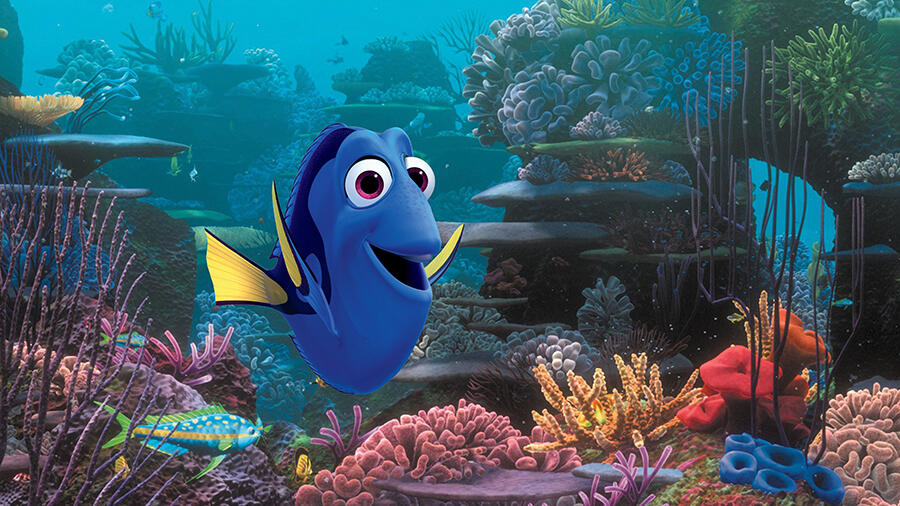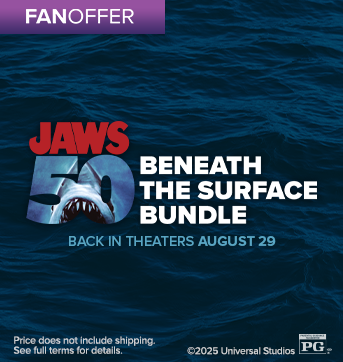
With today’s advancements in filmmaking, you don’t need help from a billion-dollar studio, aka Pixar, to make a cool underwater video in your own backyard – er, pool. At a press event in March at the Monterey Bay Aquarium, the camera and lighting team behind Pixar’s new adventure Finding Dory gave us the skinny on how you can do some of this cool moviemaking by yourself. “The great thing with technology now and certainly action photography is that you can put a camera everywhere,” says director of photography for camera Jeremy Lasky.
The sequel to the 2003 smash hit Finding Nemo pushes the envelope when it comes to animation – the film features the flowing algae of the kelp forest, an octopus with seven tentacles, and loads and loads of bubbles. These types of special effects would have been very difficult to produce on the first film, but 13 years later, so much has changed.
During research for Finding Dory, the Pixar team wanted to be sure they captured the underwater world in the most authentic way possible. “It was a lot of fun researching this,” says director of photography for lighting Ian Megibben. “Whether I was on vacation or on a research trip,” he says, the team was “taking a Go Pro camera and just saying, hey, here’s another body of water, let me stick it in that.”
“Everybody should go out and do it,” he says. Here are some tips:
Step 1: Get an underwater camera – Years ago, this would have been something only a professional could do. But now, underwater cameras are readily available and easy to use. “Because these cameras are so small and easy, you can have fun while you’re doing,” says Megibben. “You don't have to worry about the camera, you don’t have to worry about getting it wet, and you don’t have to worry about dropping it. They’re built to be so tough,” he says. Megibben recommends using GoPro, but with a budget of roughly a couple hundred bucks, you will essentially find all the major brands – Nikon, Fujifilm and Sony, to name a few – have cameras with waterproof capabilities.
Step 2: Pick your pool – For Finding Dory filmmakers, location is everything. After spending time in the South Pacific for Finding Nemo, director Andrew Stanton wanted audiences to discover a new part of the ocean. “The kelp forest of Northern California is so rich and unique,” he says. But all you need is a body of water. You can shoot in a river, a creek, the ocean, the Gulf of Mexico, the backyard pool or even a puddle of mud. Young filmmakers will love the power that comes with making this choice and once parents narrow it down, they can encourage kids to learn about the specific plants and animals native to that area (even if it’s a neighborhood dog and a pool – there’s still so much to learn looking up from under the water’s surface).
Step 3: Mount your eye – Now that you’ve locked your location, you need to figure out how you’re going to operate the camera underwater. The Pixar team used several methods, but one of their favorites was strapping the camera to a long rod or pole, the equivalent of a selfie stick. "When I was in Hawaii we went kayaking down one of the streams. I attached the GoPro to the side of the kayak.” You could use a broomstick or a baseball bat. Get right up next to the water source and just start digging around. For more intrepid filmmakers, strap the camera onto your ankle or wrist, switch it on and go for a swim. A third option is no mounting device at all. Ocean surf makes for beautiful bubbles and for spotting lots of land and sea life –crabs, seaweed and shells of all sorts. Parents can help organize and inspire questions by making a handy shot list like the pros do.
Step 4: Download footage – Megibben says seeing what you filmed is the most exciting part of the whole process. He tells a story about shooting movies as a kid with his friends on the weekends. “I remember one movie we were making there was a scene where I wanted the camera to be in a fish tank. And I was trying to figure out how to shoot that... I got one of my friend’s mom’s clear casserole dishes and held it over the camera to get the look.” The camera wasn’t even in the water, and it still worked. Megibben says what’s important is not how you shoot the footage, but whether you can make it convincing to the audience. So, time to download and see what you got.
Step 5: Cut and share – You don’t need a fancy editing system like Avid or Final Cut Pro to put together your video. Post short clips or the whole sequence -- it’s as easy as hitting a few buttons. There are even some simple free programs out there that will help with basic editing. Watching the video together can be the jumping-off point to a dialogue about the environment and the world’s bodies of water. What wildlife did you see? What color was the water? Was the beach clean? Are there any conservation efforts? Endangered species? The sky – or the ocean floor -- is the limit.
Finding Dory comes out in theaters June 17. For more about the movie with director Andrew Stanton, check out our interview.
















